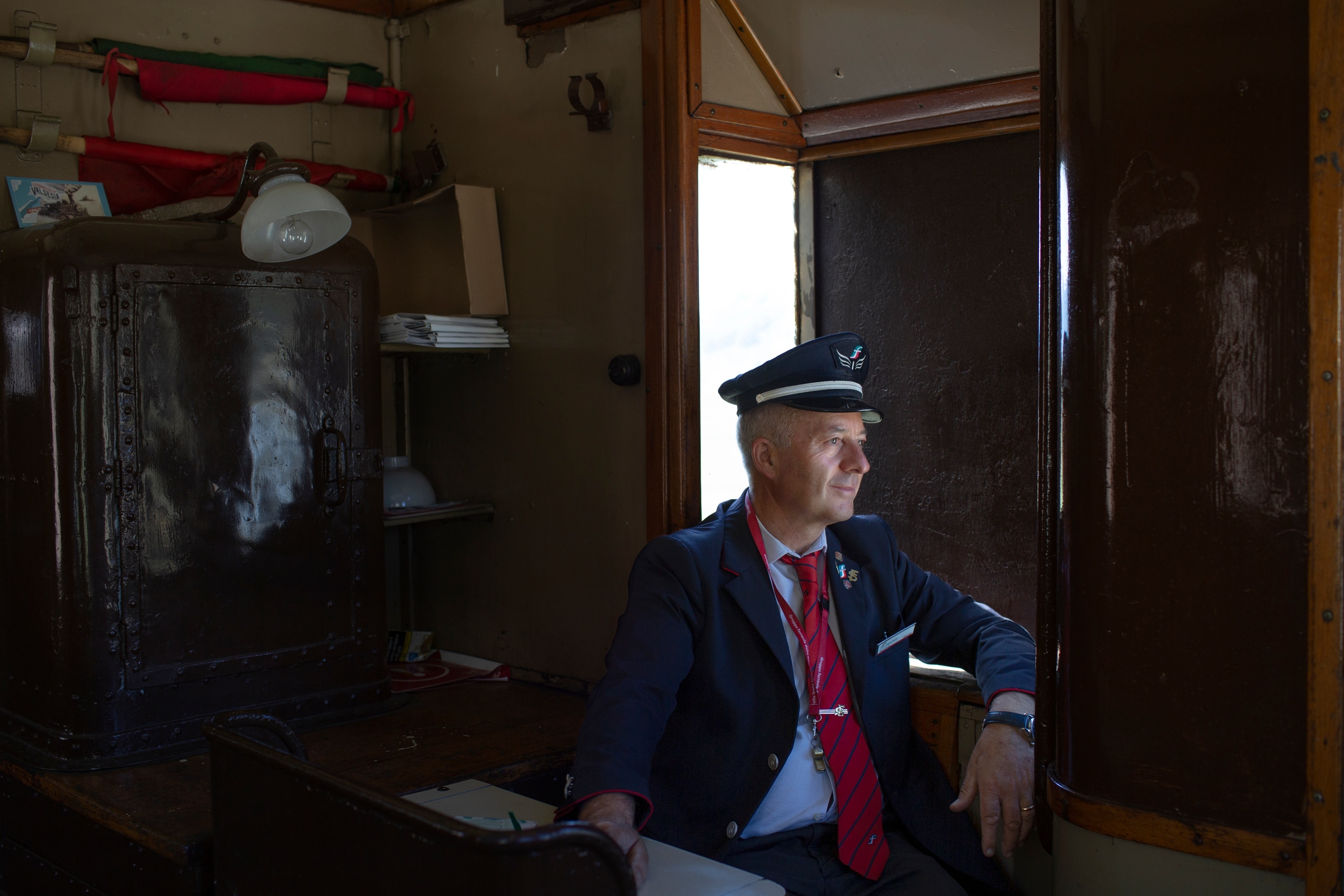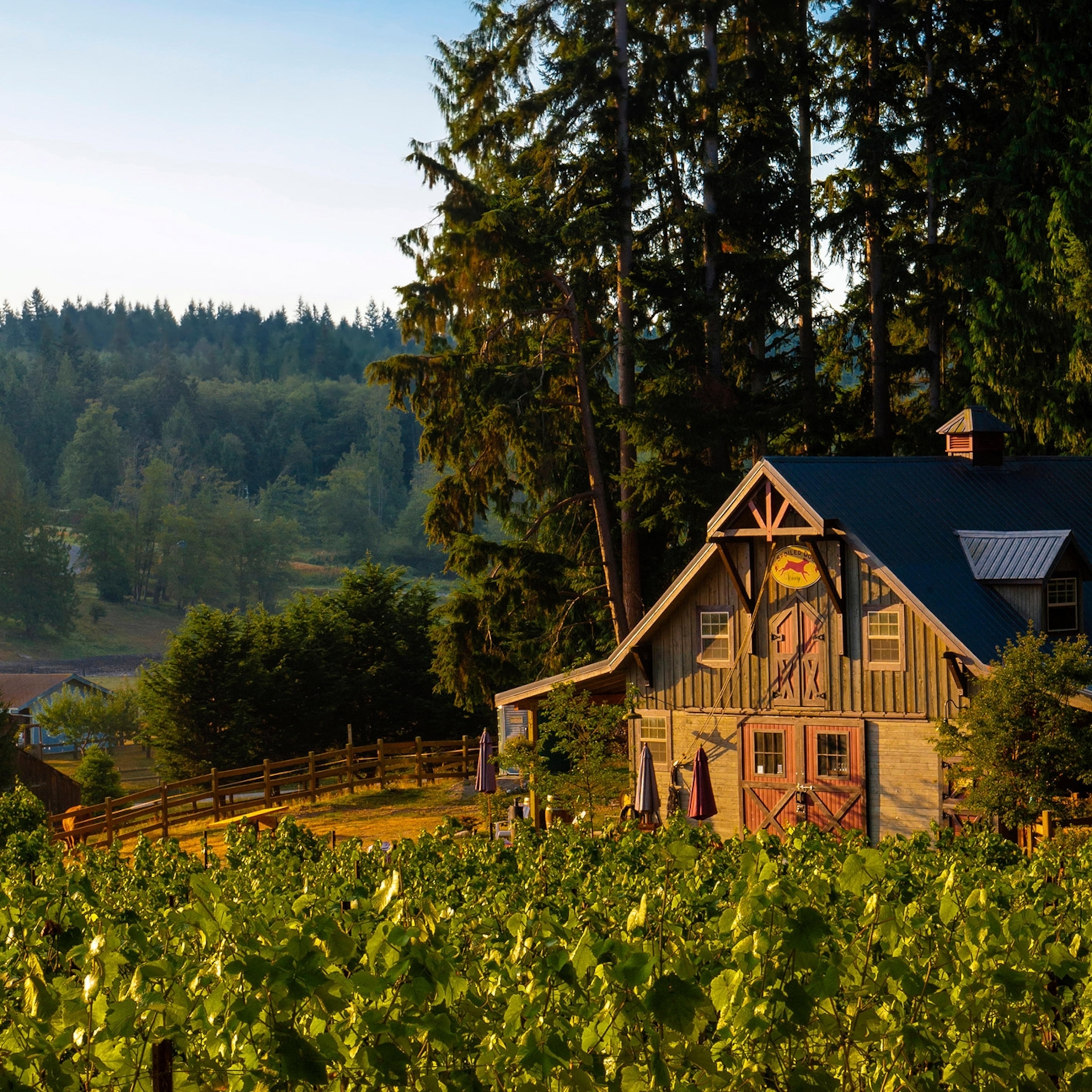
Why does Italy have a ‘Trans-Siberian’ railway?
A photographer captures the magic of Abruzzo’s mountain towns along the Sulmona-Carpinone route, which carries a curious nickname.
When Italy’s Sulmona-Carpinone train opened for service in 1897, it was hailed as an engineering masterpiece for its ability to navigate steep slopes across the Abruzzo region. The 73-mile route remains the second highest in the country—it climbs up to 4,160 feet in the Maiella mountains and traverses areas still without roads today.
With the rise of the automobile and mass migration from the countryside to cities, the historic train shut down in 2010. Buses replaced trains for daily transportation, but they ran infrequently and struggled with winter conditions on the mountains, causing still more townsfolk to leave for the convenience of bigger cities.
The train’s closure caused more than transportation troubles. Its shuttering severed a vital connection to the past, to a time when trains like the Sulmona-Carpinone helped stitch the country together after decades of conflict in the 19th century.

Now, the train is roaring back to life. After falling in love with the rhythms of the railway near my apartment in Florence, I wanted to experience the mountain journey for myself, so I took my camera and drove five hours to Sulmona to ride the entire route.
Along the way, I documented life in a part of the country that is often overlooked, where the pace is slower and travelers get the chance to step back in time.
An alpine train ride for all seasons
The journey begins in Sulmona, a two-hour drive east of Rome.
Much like the other towns along the route, Sulmona offers a glimpse of old Italy, with its ancient stone buildings, bustling outdoor markets selling seasonal produce, and lively musicians.
At 8:30 a.m., enthusiastic volunteers greet travelers at the station as the train whistles its welcome. The entire north-to-south route takes 12 hours round trip and stops at five main cities along the way to Isernia, just north of Naples.
Inside, the cars’ rich history is visible in the details—its ornate railing, glass lamps, vintage emergency stop pulls and heaters, the small prints of Italian masterpieces adorning the walls. The wooden seats resemble pews, and compartments are lined in velvet.



Along the way, I saw the landscape transform, from peaceful pastures with grazing sheep to soaring mountains lined with ancient Roman aqueducts.
(See photos from 16 of the best train trips in the world.)
I was reminded of just how wild the land is around us when the train made several stops for animals on the tracks (or sometimes scurrying along it). Rare animals call this region home, including the Marsican brown bear. Wolves, wildcats, martens, the white-breasted plover, and red-billed chough can also be found in these mountains.
Town residents waved as we pulled into stations and local musicians played fanfares as couples danced in the street. Life in these towns is a stark contrast to life on the coast, where beaches draw a constant stream of crowds.

Hour-long stops in most of these places allow travelers like me time to explore. There’s no food on the train, so we sought local restaurants with regional fare, like cured meats, focaccia, Molise mozzarella and caciocavallo cheese. Those who don’t want to wander on their own can take guided bike rides or tours.
(From Ecuador to Sri Lanka, these train trips are anything but ordinary.)
Passengers from all walks of life board this train; many older riders told me that it took them back to their youth when they commuted to work along this route. These days, people take this train for all sorts of reasons. A group of women rented out the first-class car in celebration of their annual vacation together. One man held his dog up to the window, so that it, too, could enjoy the passing scenery.
Train travel’s Italian heritage
The Sulmona-Carpinone is just one of the iconic lines that make railroads an essential part of Italian culture and history. The heyday of railroads in the country lasted from 1860 to 1873, overlapping directly with the unification of Italy. During this time, after decades of conflict, the different states of the Italian peninsula were consolidated with the borders we recognize today.
(Learn how the Orient Express became a global legend.)
Italy went through an infrastructure overhaul in the early 1900s. Initially fueled by steam, dozens of train lines sprang up, connecting millions of people at a time when motor travel was only available to the privileged. The rise of railroads coincided with the country’s industrial revolution, when steam replaced animal power. As electric and diesel became the primary power sources in ensuing years, railroads remained a symbol of progress and modernization.

The Sulmona-Carpinone line opened on the precipice of the industrial revolution, instantly becoming a symbol of the future’s promise. Since its inception, the train has been a constant through war and natural disasters, including landslides that plague the region.
During World War II, it played a critical role transporting supplies to military camps around the region, but it was destroyed by the Germans during the conflict. It took decades to repair, and once restorations were completed in the 1960s, ridership was already dwindling.
(Plans for trains in Mexico promise big benefits for travelers and residents alike.)
In 1980, a new nickname reignited interest in the line. Journalist and writer Luciano Zeppegno was so impressed by the mountain scenes along the route, he referred to the line in an article as “the little Trans-Siberian.” Even though the train operated nowhere near Siberia, the name stuck and became a way to draw in tourists.



In 2014, the Fondazione FS Italiane, a state agency, reopened the line as part of a project to give new life to 10 railway lines in the region and stimulate slow, sustainable tourism. The resurrected train was enormously popular, with ridership peaking at 31,000 visitors in 2019—then COVID-19 hit. After an extended shutdown, the line re-opened in June to a warm reception, despite running only one train a day, on weekends, and at 70 percent capacity.
From December to the end of January, more trains will run for the holiday season, with mask enforcement and separate entrance and exit lanes.
(What you can learn by following the herd in Italy.)
“For me, railroads are the greatest form of discovery and adventure,” Sulmona-Carpinone conductor d’Amico says. “Getting to know people, from commuters to students, is the most stimulating thing because inside the train there are thousands of stories that are different every time.”

It was late autumn when I rode through the mountains. By afternoon, as we passed through the Abruzzo plateaus, the slopes were awash in red and gold. But each season paints the terrain in different hues, from winter’s snow-blanketed peaks to summer’s emerald fields.
From the last stops of Carpinone and Isernia, the train makes a direct trip back to Sulmona. Returning can feel like waking up from a sweet dream of simpler times.
As night falls, the lamps cast the cars in a warm glow—but the old-fashioned lights can be finicky. The darkness presents be a good opportunity to see the whispering lights from the small towns perched along the mountainside.
Chiara Negrello is a photojournalist based in Florence, Italy. Her work focuses on everyday life as a lens to explore social issues. Follow her on Instagram.
This story was told to and written by National Geographic travel editor Allie Yang. You can find her on Twitter.
You May Also Like
Go Further
Animals
- Octopuses have a lot of secrets. Can you guess 8 of them?
- Animals
- Feature
Octopuses have a lot of secrets. Can you guess 8 of them? - This biologist and her rescue dog help protect bears in the AndesThis biologist and her rescue dog help protect bears in the Andes
- An octopus invited this writer into her tank—and her secret worldAn octopus invited this writer into her tank—and her secret world
- Peace-loving bonobos are more aggressive than we thoughtPeace-loving bonobos are more aggressive than we thought
Environment
- Listen to 30 years of climate change transformed into haunting musicListen to 30 years of climate change transformed into haunting music
- This ancient society tried to stop El Niño—with child sacrificeThis ancient society tried to stop El Niño—with child sacrifice
- U.S. plans to clean its drinking water. What does that mean?U.S. plans to clean its drinking water. What does that mean?
- Food systems: supporting the triangle of food security, Video Story
- Paid Content
Food systems: supporting the triangle of food security - Will we ever solve the mystery of the Mima mounds?Will we ever solve the mystery of the Mima mounds?
History & Culture
- Strange clues in a Maya temple reveal a fiery political dramaStrange clues in a Maya temple reveal a fiery political drama
- How technology is revealing secrets in these ancient scrollsHow technology is revealing secrets in these ancient scrolls
- Pilgrimages aren’t just spiritual anymore. They’re a workout.Pilgrimages aren’t just spiritual anymore. They’re a workout.
- This ancient society tried to stop El Niño—with child sacrificeThis ancient society tried to stop El Niño—with child sacrifice
- This ancient cure was just revived in a lab. Does it work?This ancient cure was just revived in a lab. Does it work?
Science
- The unexpected health benefits of Ozempic and MounjaroThe unexpected health benefits of Ozempic and Mounjaro
- Do you have an inner monologue? Here’s what it reveals about you.Do you have an inner monologue? Here’s what it reveals about you.
- Jupiter’s volcanic moon Io has been erupting for billions of yearsJupiter’s volcanic moon Io has been erupting for billions of years
- This 80-foot-long sea monster was the killer whale of its timeThis 80-foot-long sea monster was the killer whale of its time
Travel
- How to plan an epic summer trip to a national parkHow to plan an epic summer trip to a national park
- This town is the Alps' first European Capital of CultureThis town is the Alps' first European Capital of Culture
- This royal city lies in the shadow of Kuala LumpurThis royal city lies in the shadow of Kuala Lumpur
- This author tells the story of crypto-trading Mongolian nomadsThis author tells the story of crypto-trading Mongolian nomads






